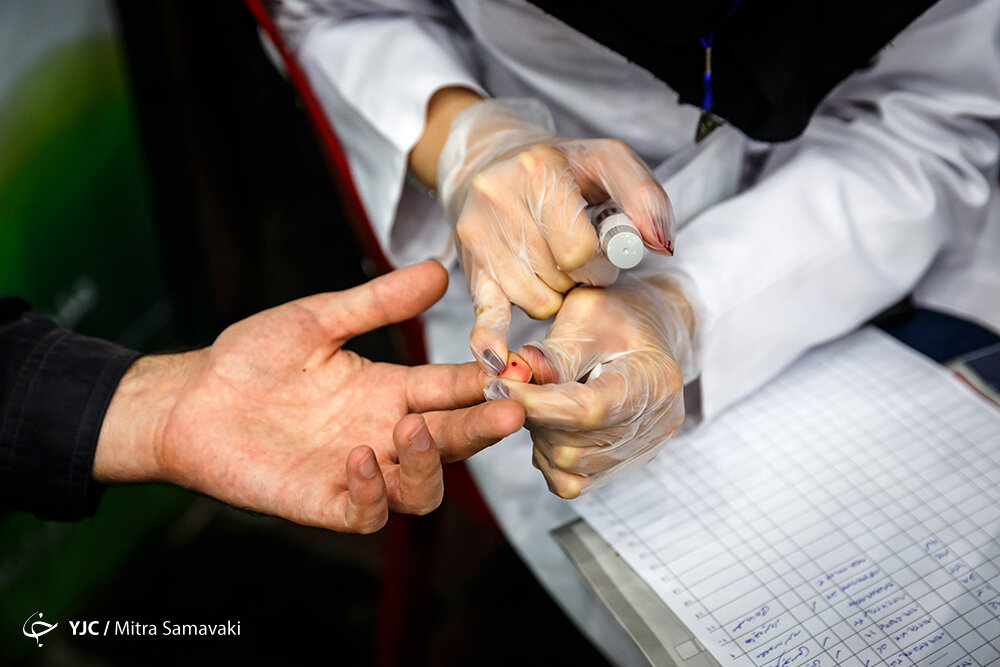Diabetes accounts for 8.5% of health care costs

TEHRAN – Over 8.5 percent of the total health expenditures of the country are spent on diabetes, Baqer Larijani, head of the Institute of Endocrinology and Metabolism, has stated.
“Non-communicable diseases (NCDs) kill 41 million people each year, equivalent to 71 percent of all deaths globally.
Diabetes, cardiovascular disease, cancer, and respiratory diseases are the cause of more than 80 percent of premature deaths due to non-communicable diseases. Unhealthy diet, smoking, physical inactivity, and alcohol consumption are the main related risk factors.
Reducing risk factors as well as screening, early diagnosis and timely treatment of non-communicable diseases can reduce a large part of their damage,” he said.
According to global estimates, the number of diabetics in the West Asia and North Africa region will increase by 96 percent over the next 25 years.
In recent decades, the prevalence of diabetes and the number of deaths due to diabetes in the world has increased dramatically, and this increase has been much greater for type 2 diabetes, he said, IRNA reported on Tuesday.
He went on to say that the rate of disabilities caused by diabetes, especially type 2 diabetes, has also increased significantly in the country, so that diabetes is one of the main causes of disability in Iran.
Referring to diabetes as a costly disease in Iran's health care system, he stated that "more than 8.5 percent of the country's total health expenditures are spent on matters related to this disease."
Due to the importance of diabetes, the country's health care system has adopted several strategies and policies to reduce the burden of the disease, including, collecting data and measuring the burden of the disease at national and transnational levels, the creation of a national action plan for non-communicable diseases, the development of a national diabetes framework, the establishment of a national network of diabetes clinics, the design of a diabetes research roadmap and the national diabetes registration system, he explained.
Referring to the second edition of the National Document for the Prevention and Control of Non-Communicable Diseases, he noted that the document has been updated by various working groups of the Ministry of
Health, in cooperation with the Endocrinology and Institute of Endocrinology and Metabolism of Tehran University of Medical Sciences.
Diabetes burden in Iran
In Iran, 25 percent of people are not aware of their diabetes. The figure is 50 percent in the world and 60 percent in West Asia and North Africa region.
About 422 million people worldwide have diabetes, the majority living in low-and middle-income countries, and 1.6 million deaths are directly attributed to diabetes each year.
Both the number of cases and the prevalence of diabetes have been steadily increasing over the past few decades. As it is expected that by 2030, 578 million people will develop diabetes, and the number of patients may exceed 700 million by 2045.
In 2019, 4.2 million people died of diabetes. And now, 50 percent of coronavirus patients were diabetic.
About 90 percent of diabetics are diagnosed with type 2 diabetes worldwide. Education, self-care, and following a healthy lifestyle, and using medication are effective in controlling the disease.
Type 2 diabetes is preventable and, in some cases, can be cured early. Lack of access to insulin, failure to early diagnosis of type 1 diabetes leading to diabetic ketoacidosis is a common cause of death in children and adolescents.
Diabetes is a major cause of blindness, kidney failure, heart attack, stroke, and lower limb amputation. A healthy diet, physical activity, and avoiding tobacco use can prevent or delay type 2 diabetes. In addition, diabetes can be treated and its consequences avoided or delayed with medication, regular screening, and treatment for complications.
FB/MG

Leave a Comment